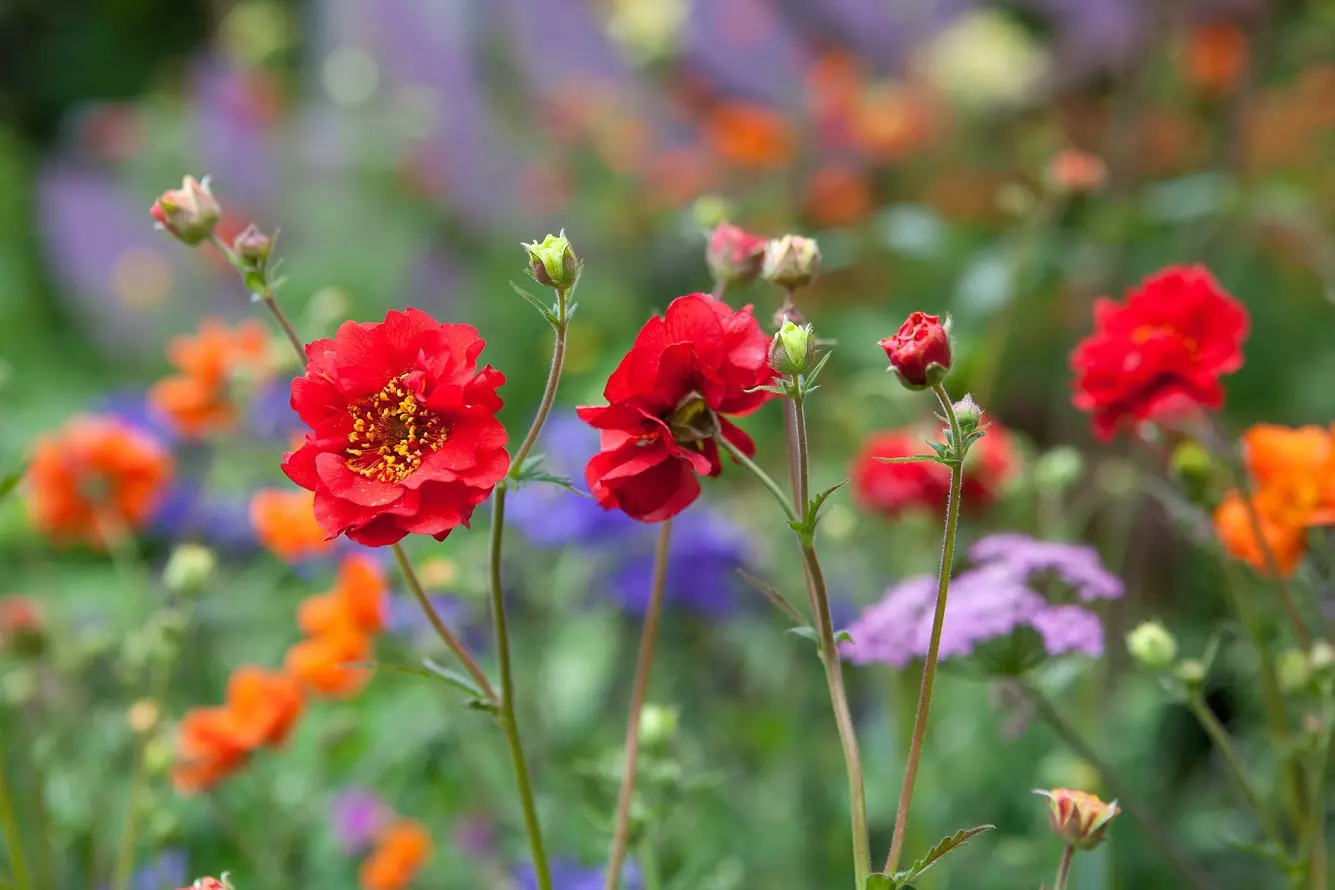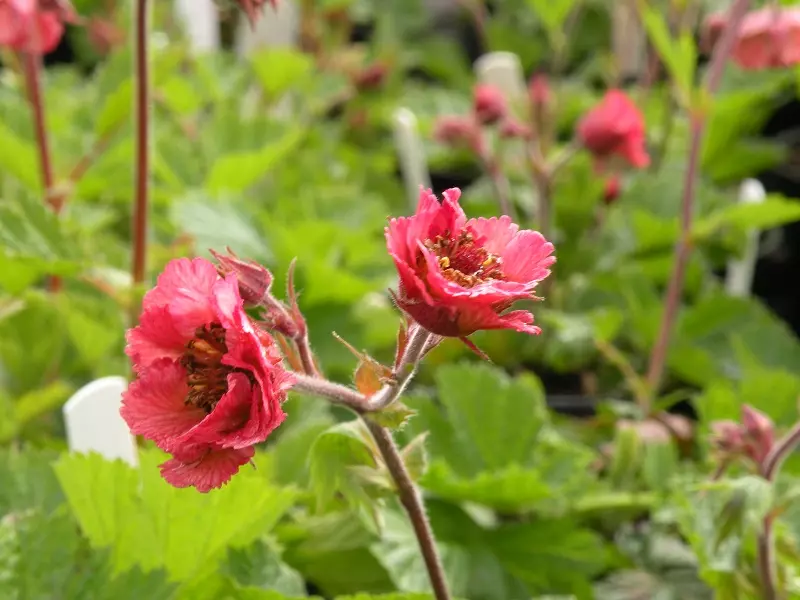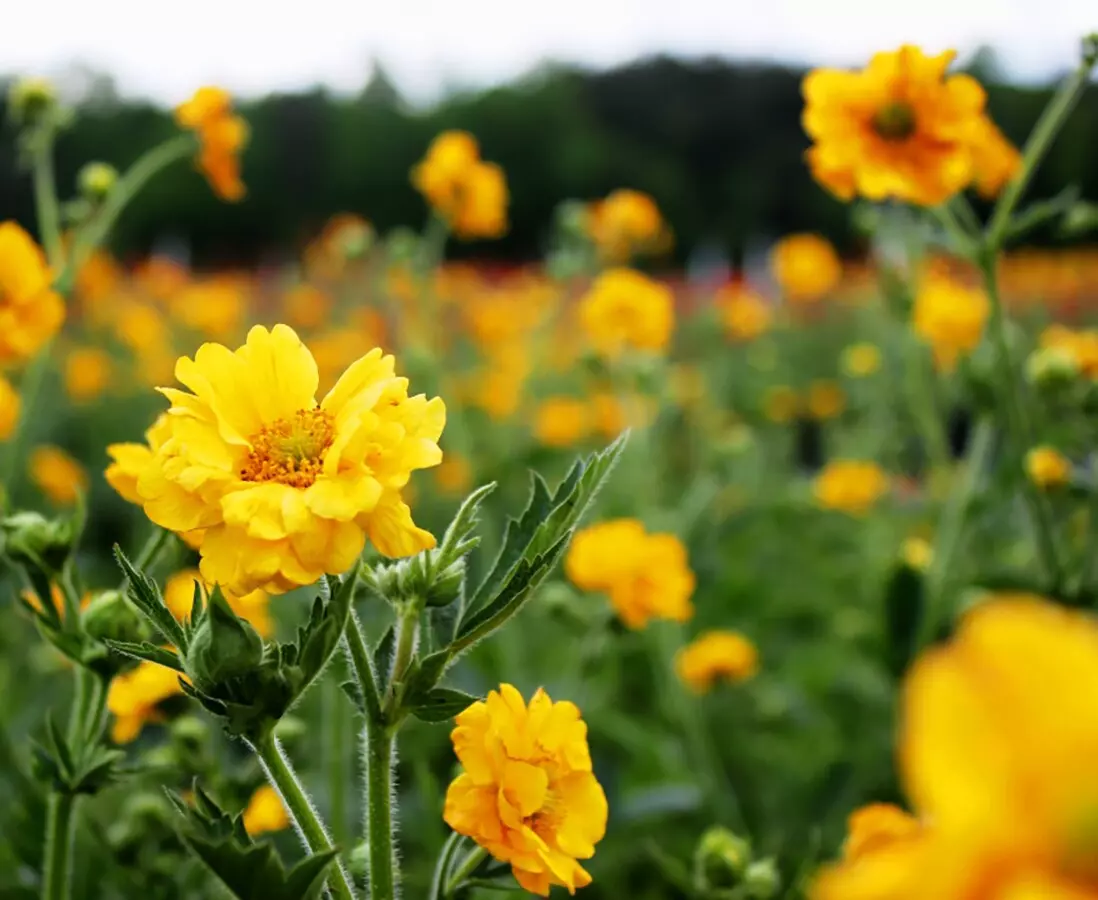Geum - Varieties, Colors and How to Care for Avens Flowers
Geum is not a popular garden plant, although it deserves attention because of its interesting appearance and a variety of different cultivars. The plant is quite easy to grow and is perfect for nearly all conditions. Thanks to this, it can be often found in nature. Check what avens flowers look like, learn about their characteristics and find out how to care for them to ensure beautiful blooming.

Geum – what kind of plant is it, and where does it come from?
Avens (Geum) is a rather universal plant – it grows well both in cold and warm regions, thanks to which it’s widespread almost everywhere in the world. There are three areas of the plant’s origin – located quite far away from each other. It’s Asia, South America and New Zealand.
Geum grows naturally in mountainous regions, where it feels particularly good. There is even a special variety of these plants - geum montanum, or the Alpine avens.

What does geum look like?
The appearance of geum plants depends mostly on their variety. Most plants from this group grow up to 40-50 cm (1.3-1.6 ft), but some are even 100 cm (3.3 ft) tall.
Avens flowers are the most noteworthy. They consist of five petals and have different colors. But this applies to the basic variety only. Other cultivars develop more petals. What’s more, they can be:
- red,
- orange,
- yellow,
- brown.
The inside of each flower contains tiny stamens in different shades of yellow.

Geum – the most popular varieties
Although, as estimated, there are over 50 different geum varieties in the world, some cultivars are more popular than others. Here are the best varieties of avens:
- wood avens (Geum urbanum)
- creeping avens (Geum reptans)
- Geum coccineum
- Chilean avens (Geum chiloense)
What is the best soil for avens plants?
Geum is very tolerant when it comes to the soil it grows in. But is provided with excellent conditions, it blooms better – even twice in one season. To achieve this, make sure the soil is loose, moderately wet and medium-rich. Avens can grow perfectly in sandy and loamy soils. It’s important that the ground is not overly dry. The pH level can be either alkaline or acidic.

The best location for geums
Geums prefer growing in half-shaded areas. They feel great in the company of slightly taller perennials. Pay a special attention to this aspect, as the plant might wither under intense sunlight, and it will be more prone to various diseases.
How to plant geums?
Geum seedlings can be purchased in many garden stores – one shouldn’t have problems with finding them. You can plant avens directly in a flower bed. Pay attention to the depth of the holes prepared for the plant. They should be large enough to contain the extensive root system.
When planting geums, remember about spacing between the plants. It’s because it will grow wider. The growth is not too intense, though, so 25-30 cm (0.80-1 ft) gaps should be enough.

Do geums need any special care?
Geums aren’t very demanding plants, which means they don’t need anything special. But note that if you take a good care of them, they will bloom beautifully – even twice during one season. How to achieve this? Make sure to deadhead flowers after they finish blooming. Thanks to this, the plant has more strength to bloom longer. Similarly, remove any dead leaves as well.
What else does avens need? Splitting apart. It should be done every few years. The plant needs to be divided into smaller clumps, which improve its health.
Does geum need fertilizing?
Geum is one of the plants that don’t require fertilizing, and even don’t tolerate it. Preparing the plant for spring is the only exception. You can use some natural compost at this stage, making sure not to use too much.
Of course, sometimes the plant’s condition might get worse, e.g., because of the weather conditions or various diseases. In such a case, you can make an exception and feed the plant to aid its health. There are no special products for this purpose – use universal fertilizers instead.
Is geum resistant to pests and diseases?
Geums are highly valued among gardeners. They are very resistant – both to weather conditions (e.g., frost) and pests. They aren’t likely to get sick. Occasionally, slugs or vine weevils might pose a threat to them. Rarely, aphids feed on their leaves as well. Each of the mentioned pests can be eliminated using special products.

📍 What is geum?
Geum is a perennial. It's a very universal garden plant of little requirements. The plant grows everywhere in the world – there are over 50 varieties of geums. It's tolerant about the soil, and depending on the type, it blooms in yellow, orange, red, or brown.
📍 When do geums bloom?
The blooming time of geums depends on their variety and conditions in which it grows. Typically, it happens between May and June. Sometimes, the plant blooms again in fall. To make it happen, make sure to deadhead the flowers when they finish blooming.
📍 How to grow geums?
Geums aren't complicated to grow. The plant tolerates alkaline and acidic soils, it's important the ground is moderately wet all the time. The location for the plant should be in half-shade. Geums don't have to be fertilized.
📍 How much do geums cost?
The price of geums depends on their variety, as well as the place where you're buying the seedlings. The cheapest ones cost no more than a few dollars. The most expensive, unique varieties might cost over $20.
Featured articles




